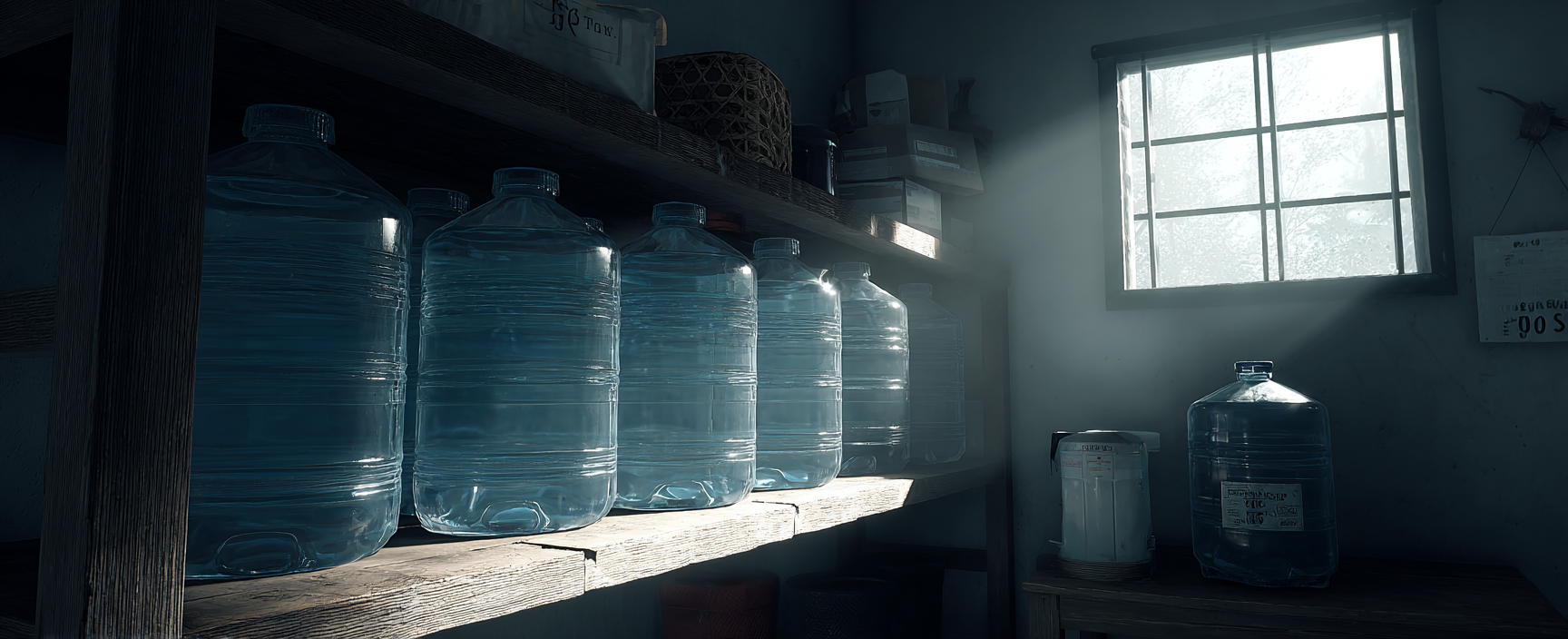
How to Store Emergency Drinking Water Forever
Learning how to store emergency drinking water properly is crucial for survival preparedness. I've spent years perfecting these techniques, and today I'm sharing my proven methods for ensuring you have safe drinking water when you need it most.
Choosing the Right Containers
For reliable long-term water storage, you need food-grade containers specifically designed for water. The Ready H2O Emergency Drinking Water Storage system from Prepper Hideout is perfect for this purpose.
- Use BPA-free plastic or stainless steel containers
- Avoid containers that previously held chemicals
- Select containers with tight-sealing lids
- Choose sizes you can easily handle when full
Water Treatment Methods
Before storing water, it needs proper treatment to prevent bacterial growth. Here are the most effective methods:
- Add 2-4 drops of unscented bleach per gallon
- Use water treatment tablets
- Consider a UV water sterilizer system
Storage Location Tips
Where you store your water matters as much as how you store it:
- Keep containers in a cool, dark place
- Store away from direct sunlight
- Maintain temperature between 50-70°F
- Place containers off the ground on pallets
Rotation Schedule
Even properly stored water needs regular rotation:
- Check containers every 6 months
- Replace commercially bottled water yearly
- Rotate home-filled containers every 6 months
- Label containers with filling and rotation dates
Emergency drinking water storage is a fundamental survival skill that every prepared household needs to master. Let me share some additional essential aspects of water storage that will help keep your family safe.
Advanced Water Storage Solutions
The Ready H2O Emergency Water Storage System offers superior protection, but here are extra tips to enhance your water security:
- Install a backup whole-house filtration system
- Create multiple storage locations throughout your property
- Use food-grade water barrels with spigots for easy access
- Consider installing rainwater collection systems
Emergency Filtration Methods
Beyond storage, having reliable filtration options is crucial:
- Keep portable water filters like the Kadadyn KFT Expedition Microfilter
- Stock activated charcoal filters
- Have multiple filtration methods ready
- Store replacement filter cartridges
Water Storage Maintenance
Regular maintenance ensures your stored water stays safe:
- Clean containers before each refill
- Test water quality every 3 months
- Inspect seals and containers for damage
- Document maintenance dates and water testing results
Storage During Emergencies
- Fill bathtubs and sinks when disasters approach
- Use WaterBOB emergency containers
- Store water in freezer containers for backup cooling
- Keep collapsible water containers for portability
Storing emergency drinking water is a skill every family needs to master. After years of emergency preparedness training, I've discovered several advanced techniques for water storage that go beyond the basics. Let me share what really works when preparing for long-term water security.
Water Collection Systems for Sustainable Supply
Having stored water is essential, but creating renewable water sources takes your preparedness to the next level:
- Install rain barrels under downspouts with first-flush diverters to remove contaminants
- Set up a gravity-fed collection system that works without electricity
- Connect multiple barrels with overflow pipes for maximum collection capacity
- Consider an Aquaviable AV-5 Atmospheric Water Generator to pull moisture from air
Hidden Water Storage Locations
Strategic storage placement throughout your home creates redundancy and accessibility:
- Under beds in sealed containers
- Behind false walls in basement areas
- In unused spaces beneath stairs
- Buried in food-grade containers in your yard (mark locations discreetly)
- Inside hollow furniture specially designed for storage
Emergency Water Treatment Options
When traditional purification methods aren't available, these alternatives can save lives:
- Solar disinfection (SODIS) using clear plastic bottles in direct sunlight for 6+ hours
- DIY sand and charcoal filters using layered materials in buckets
- Boiling with improvised heating methods when power is out
- Keep a Kadadyn KFT Expedition Microfilter for portable filtration needs
Water Security Measures
Protecting your water supply becomes crucial during extended emergencies:
- Store water in multiple locations rather than one central point
- Use opaque containers to prevent algae growth and hide contents
- Keep water storage information limited to trusted family members
- Create decoy storage areas with smaller amounts of water
- Install a WS Smart Whole House Water Filter for everyday use and emergency backup
Frequently Asked Questions
How much water should I store per person?
The minimum standard is one gallon per person per day for two weeks (14 gallons). I recommend doubling that to one month's supply, with extra for hygiene and cooking needs.
Can I drink water that's been stored for over a year?
Yes, if properly stored in food-grade containers with appropriate treatment. Always check for clarity, odor, and taste before consumption. When in doubt, re-treat the water before drinking.
What's the best container for long-term water storage?
The Ready H2O Emergency Drinking Water Storage system offers the best combination of durability, portability and proper materials for safe long-term storage.
Can I use swimming pool water in an emergency?
Pool water can be used for hygiene purposes immediately, but should be properly filtered and treated before drinking due to chemicals and contaminants.
Explore Complete Water Storage Solutions

Leave a comment